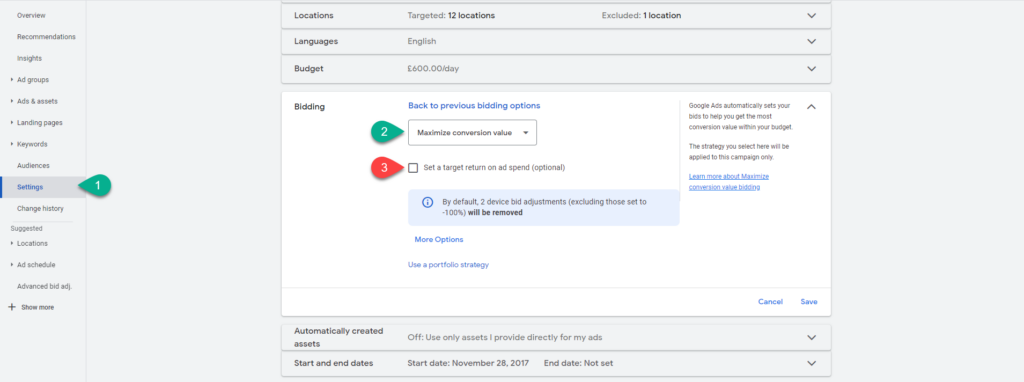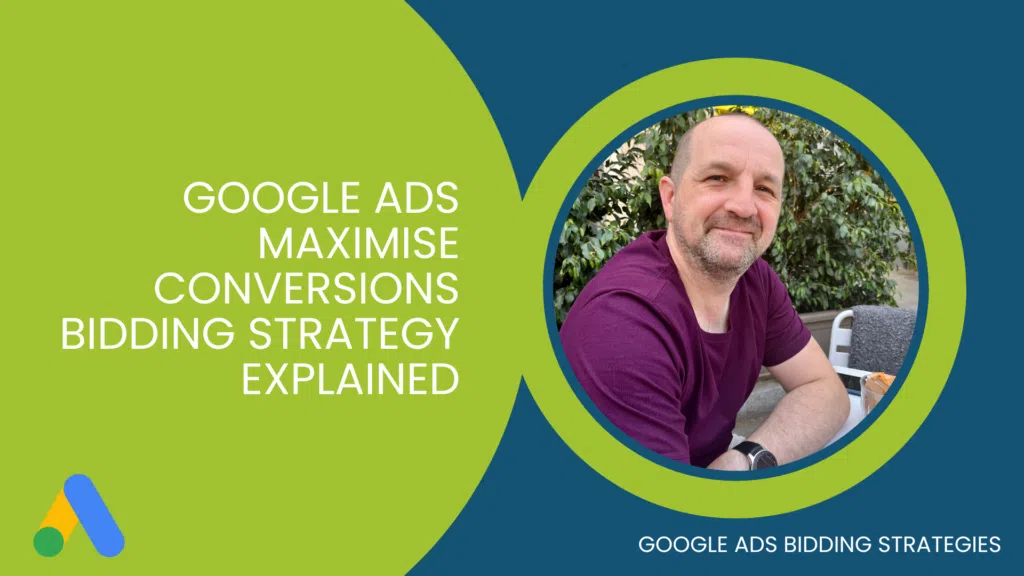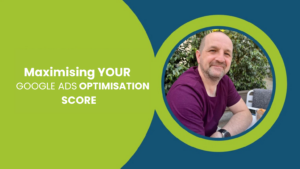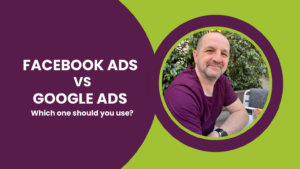Maximise Conversions is a bidding strategy that focuses on getting as many conversions as possible within your budget. In this blog post, we’ll explain what Maximise Conversions is, who should use it, how to configure it, and best practices for using it effectively.
As an entrepreneur or marketing professional, maximising the effectiveness of your advertising expenditure is paramount.
One way to do this is to use the Maximise Conversions bidding strategy in Google Ads.
Table of contents
- What is Maximise Conversions Bidding?
- Who Should Use Maximise Conversions Bidding?
- How to Configure Maximise Conversions Bidding
- Common Challenges and Troubleshooting Tips
- Maximise Conversions Best Practices
- The Importance of Conversion Rate Optimisation
- The Benefits of Maximise Conversion Bidding Strategy
What is Maximise Conversions Bidding?
Maximise Conversions is a bidding strategy that focuses on getting as many conversions as possible within your budget. Google Ads will automatically adjust your bids in every auction, adjusting for searches which it believes, based on your historic performance data, are most likely to convert.
Other signals Google might use to adjust bids are:
- the search term used by the user
- searches that the same user had made prior to this search
- the user’s location
- the time of day and day of the week
- the device that the user is using
- whether that user is a member of in-market or affinity audience
- whether that user has visited your site before
For example, let’s say you have a budget of £1,000 and your goal is to get as many conversions as possible. You can use Maximise Conversions bidding, and Google Ads will automatically adjust your bids to get the most conversions possible within your budget.
Note: This bidding strategy does not focus on the Cost per Conversion (the CPA). That does mean that the maximum conversions could be just one (which would generally be considered a disaster), it could be 20 (which might be a good result), or it could be 62 (which would be awesome!).
Who Should Use Maximise Conversions Bidding?
Maximise Conversions bidding is best for advertisers who are primarily focused on generating as many conversions as possible, regardless of the cost for each conversion. It’s particularly useful for businesses that have a large volume of conversions and want to get the most out of their advertising budget.
How to Configure Maximise Conversions Bidding
To use Maximise Conversions bidding, you need to have conversion tracking set up correctly in your Google Ads account.
This implies the necessity of monitoring the precise actions you intend users to undertake on your website, such as completing a transaction or submitting a contact information form.
You also need to have enough conversion data to support machine learning. We recommend a minimum of 15 conversions in a two-week period, but ideally 30 conversions in a month.
Google Ads employs machine learning algorithms to enhance your bidding strategy, thereby enabling more efficient and expedited optimisation of your bids and overall campaign effectiveness. The greater quantity of conversion data at your disposal, the more proficiently and swiftly it can fine-tune your bidding process and elevate your campaign performance.
To set up Maximise Conversions bidding, follow these steps:
- In Google Ads, click on the campaign you want to edit.
- Click on “Settings” in the left-hand menu.
- Click on “Bidding” and then “Change bid strategy.”
- Select “Maximise Conversions” from the list of bidding strategies.

Common Challenges and Troubleshooting Tips
While the “Maximise Conversions” bidding strategy offers numerous benefits, like any sophisticated tool, it can present its own set of challenges. Here, we’ll explore some of the common issues advertisers might face when implementing this strategy and provide practical troubleshooting tips to overcome them:
Insufficient Conversion Data:
Challenge: The Maximise Conversions strategy relies heavily on historical conversion data to make informed bidding decisions. If your campaign lacks sufficient conversion data, the algorithm might struggle to optimize effectively.
Troubleshooting Tip: Begin by setting up conversion tracking and give the algorithm some time to accumulate data. Consider starting with a manual bidding strategy until your campaign gathers enough conversion events to switch to Maximise Conversions confidently.
Budget Limitations:
Challenge: While Maximise Conversions aims to allocate your budget optimally, it’s crucial to ensure your daily budget is adequate. If your budget is too restrictive, the algorithm might not have sufficient room to experiment and optimize effectively.
Troubleshooting Tip: Review your campaign’s historical performance and adjust your daily budget based on your advertising goals. If your budget is limited, consider testing the strategy on specific high-priority campaigns or ad groups first.
Seasonal Variations:
Challenge: Certain industries or products experience seasonal fluctuations in demand, which can affect the performance of Maximise Conversions during off-peak periods.
Troubleshooting Tip: Monitor the performance of your campaigns and be prepared to make manual adjustments during peak seasons or periods of lower demand. You can temporarily switch to other bidding strategies or adjust budget allocations to align with seasonal trends.
Limited Control:
Challenge: The automated nature of Maximise Conversions means that advertisers have limited control over individual bid adjustments, placements, and keyword targeting.
Troubleshooting Tip: If you require more granular control over bids or specific placements, you might consider using a different bidding strategy, such as Target CPA or Manual CPC, for certain campaigns. Striking a balance between automation and manual control can help you achieve the desired results.
Conversion Quality:
Challenge: Maximise Conversions aims to maximize the overall volume of conversions, but it might not discriminate between high-quality and low-quality conversions.
Troubleshooting Tip: Regularly review the types of conversions being generated and refine your targeting and ad messaging accordingly. Quality should always take precedence over quantity, so consider adjusting your bidding strategy if the conversion quality is consistently subpar.
Ad Creative and Landing Pages:
Challenge: Even with an optimized bidding strategy, if your ad creative and landing pages are not compelling or relevant, you might not see the desired conversion rates.
Troubleshooting Tip: Continuously test and optimize your ad creatives and landing pages to ensure they align with user intent and provide a seamless experience. A strong synergy between your ads and landing pages can significantly improve conversion rates.
Monitoring and Adjusting:
Challenge: Advertisers might mistakenly assume that the Maximise Conversions strategy requires no oversight, leading to missed opportunities for optimization.
Troubleshooting Tip: Regularly review performance metrics, conversion data, and other relevant KPIs. If you notice any concerning trends, be prepared to make adjustments, whether it’s tweaking your targeting, adjusting bids, or even switching to a different bidding strategy.
Maximise Conversions Best Practices
Here are some best practices for using Maximise Conversions effectively:
- Make sure you have conversion tracking set up correctly and have enough conversion data to support machine learning.
- Set an appropriate budget to ensure you have enough funds to reach your conversion goals.
- Monitor your campaign closely and adjust your bids as necessary.
- Focus on improving your website’s conversion rate to increase your ROI.
The Importance of Conversion Rate Optimisation
Conversion rate optimisation (CRO) is the process of improving your website’s ability to convert visitors into customers. It’s an essential component of any Maximise Conversion Value strategy because it directly impacts your ROI.
By improving your website’s conversion rate, you’ll be able to generate more revenue from the same amount of ad spend. This means that you’ll be able to achieve your conversion value goals more easily, which will help you maximise your revenue and ROI.
Learn more:
- The Ultimate Guide to eCommerce CRO
- Hire an eCommerce CRO Agency | Boost Conversion Rates and Revenue
Maximise Conversions Compared with Other Bidding Strategies
Maximise Conversions vs. Target CPA
Maximise Conversions and Target CPA (Cost per Acquisition) are two bidding strategies in Google Ads that businesses can use to optimise their advertising campaigns. Both strategies focus on generating conversions, but they differ in their approach.
Maximise Conversions is a bidding strategy that automatically sets bids to help businesses get the most conversions possible within their budget. Google Ads uses machine learning to analyse historical campaign data and determine the best time and place to show ads to users who are most likely to convert.
Consider a scenario where a company allocates a budget of £1,000 for advertising purposes, aiming to maximise the number of conversions it can achieve. Using Maximise Conversions bidding, Google Ads will adjust the bids to show ads to users who are most likely to convert, even if it means spending more per click – that could mean the budget generated five conversions, costing £200 each on average.
Popular Google Ads Videos
Target CPA bidding, on the other hand, is a bidding strategy that helps businesses achieve a specific cost-per-acquisition goal. With Target CPA bidding, businesses set a specific CPA goal and Google Ads automatically adjusts the bids to achieve that goal. This strategy helps businesses allocate their budget to the campaigns and ad groups that are most likely to generate conversions at the target CPA.
For example, if a business wants to generate leads at a cost of £50 per lead, they may choose to use Target CPA bidding. Google Ads will automatically adjust the bids for keywords, ad groups, and campaigns to achieve the target CPA. In this example, the campaign might focus on cheaper clicks, spend just £200 and generate four conversions. The budget spent is dramatically lower because this bidding strategy focuses on value, rather than just quantity.
Learn more: How to Optimise Google Ads Using Target CPA Bidding
Maximise Conversions vs. Target ROAS
Maximise Conversions and Target ROAS (Return on Ad Spend) are two bidding strategies in Google Ads that businesses can use to optimise their advertising campaigns. Both strategies focus on generating conversions, but they differ in their approach.
Maximise Conversions is a bidding strategy that automatically sets bids to get the most conversions possible within the budget. Google Ads uses machine learning to analyse historical campaign data and determine the best time and place to show ads to users who are most likely to convert.
Envision a business endowed with a £1,000 advertising budget, fervently desiring to engender an abundance of conversions, leaving no opportunity untapped. Using Maximise Conversions bidding, Google Ads will adjust the bids to show ads to users who are most likely to convert, even if it means spending more per click. That could mean that just four conversions were generated, each costing £250.
Target ROAS bidding, on the other hand, is a bidding strategy that helps businesses maximise revenue by setting a specific target for the ratio of revenue to ad spend. This strategy takes into account the average value of a conversion and helps businesses allocate their budget to the campaigns and ad groups that are likely to generate the most revenue.
Let’s consider an illustration featuring a retail establishment specialising in two distinct products: the first product yields substantial revenue per conversion, while the second product yields comparatively modest revenue per conversion. If the store uses Target ROAS bidding, Google Ads will allocate more of the budget to the campaign promoting the high-revenue product, as it has a higher ROAS.
Maximise Conversions focuses on conversions regardless of cost, nor value. Target ROAS focuses on conversion cost and the revenue generated.
Learn more: How to Optimise Google Ads Using Target ROAS Bidding
Recent Google Ads Blog Posts
Maximise Conversions vs. Maximise Conversion Value
Maximise Conversions and Maximise Conversion Value are two bidding strategies in Google Ads that businesses can use to optimise their advertising campaigns. Both strategies focus on generating conversions, but they differ in their approach.
Maximise Conversions is a bidding strategy that automatically sets bids to help businesses get the most conversions possible within their budget. Google Ads uses machine learning to analyse historical campaign data and determine the best time and place to show ads to users who are most likely to convert.
For example, imagine a business that has a budget of £1,000 for advertising and wants to generate as many conversions as possible.
By employing the Maximise Conversions bidding strategy, Google Ads dynamically adjusts bids to ensure that advertisements are presented to users with the highest likelihood of conversion, even if it entails a higher cost per click.
Maximise Conversion Value, on the other hand, is a bidding strategy that automatically sets bids to help businesses maximise the total conversion value within their budget – the ROI. Google Ads uses machine learning to analyse historical campaign data and determine the best time and place to show ads to users who are most likely to generate the highest conversion value.
For example, imagine a business that sells two products: one that generates a high revenue per conversion and one that generates a low revenue per conversion. If the business uses maximise Conversion Value bidding, Google Ads will allocate more of the budget to the campaign promoting the high-revenue product, as it has a higher conversion value.
Maximise Conversions focuses on conversion quantity, regardless of cost nor value. Maximise Conversion Value focuses on the highest revenue, regardless of cost or ROI.
Learn more: How and When to Use the Maximise Conversion Value Bidding Strategy in Google Ads
Maximise Conversions vs Manual Bidding
The decision between “Maximise Conversions” and manual bidding boils down to automation versus control. The “Maximise Conversions” strategy offers automated bid optimization based on real-time data analysis, freeing up time and ensuring efficient resource allocation. However, it might lack the granular control of manual bidding, which allows precise adjustments at the keyword level and caters to industry insights.
Manual bidding empowers advertisers to fine-tune bids according to specific campaign goals and market dynamics. This approach is ideal for smaller keyword sets where hands-on management can make a significant impact. However, manual bidding demands time and industry expertise, making it more suitable for advertisers who prefer a hands-on approach.
The choice hinges on your campaign’s complexity, your comfort level with automation, and the amount of time you can invest. Striking a balance between automated efficiency and manual finesse is key, ensuring that your chosen strategy aligns with your objectives and resources while driving optimal results.
Maximise Conversions vs Enhanced CPC
“Maximise Conversions” and “Enhanced Cost-Per-Click (CPC)” centres around the balance between automation and manual control. “Maximise Conversions” employs advanced algorithms to optimize bids for maximum conversions, utilizing real-time data and automation to drive efficiency. On the other hand, “Enhanced CPC” augments manual bidding by automatically adjusting bids based on the likelihood of conversions, blending automation with the ability to set maximum bid limits.
“Maximise Conversions” shines in its hands-off approach, automating bid adjustments to capitalize on conversion opportunities. The strategy is particularly useful when conversion volume is the primary goal, allowing advertisers to allocate resources more effectively. However, it might sacrifice a certain level of control over individual bids and placements.
“Enhanced CPC” strikes a balance between automation and manual input. While it automates bid adjustments based on conversion potential, it still permits advertisers to set maximum bid limits, offering a degree of control over spending. This strategy is ideal for those seeking a middle ground – benefiting from automation while retaining some control over bid management.
Ultimately, the choice hinges on your desired level of automation and control, as well as the specific goals of your campaigns. If you’re looking for full automation and maximum conversions, “Maximise Conversions” could be your choice. If you seek a blend of automation and control, “Enhanced CPC” might better suit your needs. By aligning your strategy with your campaign objectives and preferences, you can drive optimal results while effectively managing your budget.
The Benefits of Maximise Conversion Bidding Strategy
The “Maximise Conversions” bidding strategy offered by Google Ads stands out as a powerful tool for advertisers. This approach goes beyond the traditional bidding methods, harnessing the potential of automation and data analysis to deliver a range of benefits that can greatly enhance your advertising campaigns. Here’s a closer look at the advantages of incorporating the “Maximise Conversions” bidding strategy into your Google Ads campaigns:
Optimal Resource Allocation:
By using the Maximise Conversions bidding strategy, you empower Google’s advanced algorithms to allocate your budget effectively across various campaigns, ad groups, and keywords. This intelligent distribution ensures that your resources are concentrated on the areas that are most likely to generate conversions, helping you achieve better overall results within your allocated budget.
Real-Time Adjustments:
One of the key benefits of the Maximise Conversions strategy is its ability to adapt in real time. The algorithm constantly analyzes changing market conditions, user behaviour, and other relevant factors to adjust bidding decisions. This means that your campaigns remain relevant and competitive, even as the digital landscape evolves.
Enhanced Conversion Volume:
The primary goal of any advertising campaign is to drive conversions. Maximise Conversions is specifically designed to prioritize actions that lead to conversions, whether it’s a purchase, sign-up, download, or any other valuable user interaction. By focusing on maximizing conversion volume, you’re increasing the chances of achieving your campaign objectives.
Time-Saving Automation:
Manually managing bids and adjusting strategies across numerous campaigns can be time-consuming and complex. The Maximise Conversions strategy automates this process, reducing the need for constant manual intervention. This time-saving feature allows advertisers to focus on other important aspects of their campaigns, such as creative optimization and audience targeting.
Improved Performance Insights:
The Maximise Conversions strategy provides valuable insights into the performance of your campaigns. By analyzing data related to conversions, click-through rates, and other relevant metrics, you can gain a deeper understanding of your audience’s preferences and behaviours. These insights can be used to refine your overall marketing strategy and make informed decisions for future campaigns.
Flexibility and Experimentation:
Google Ads offers a range of bidding strategies, each catering to different campaign goals. Maximise Conversions provides advertisers with the flexibility to test and experiment with various strategies. This experimentation can help you identify the most effective bidding approach for your specific business objectives and target audience.
Reduced Guesswork:
Bid management can sometimes involve a certain level of guesswork, especially when manually adjusting bids based on intuition. With the Maximise Conversions strategy, bidding decisions are data-driven, relying on algorithmic analysis of historical data and real-time inputs. This data-driven approach reduces the element of guesswork and provides a more structured way to optimize bids.
This post is part of the Google Bidding Strategies Guide — created by our Google Ads Agency Team
In this series:
- Manual CPC Bidding in Google Ads: A Comprehensive Guide
- Enhanced CPC (eCPC) Bidding In Google Ads Explained
- How to Optimise Google Ads Using Target CPA Bidding
- How to Optimise Google Ads Using Target ROAS Bidding
- Google Ads Maximise Conversions Bidding Strategy Explained
- Google Ads Maximise Clicks Bidding Strategy Explained
- Google Ads Target Impression Share Bidding Strategy
- How and When to Use the Maximise Conversion Value Bidding Strategy in Google Ads
- Choosing the Best Bidding Strategy for Google Display Ads
- Every YouTube Ads Bidding Strategy Explained
- Bidding Strategies to Maximise Google Shopping Performance
- Manual Bidding vs Automatic Bidding: Which is Better?










